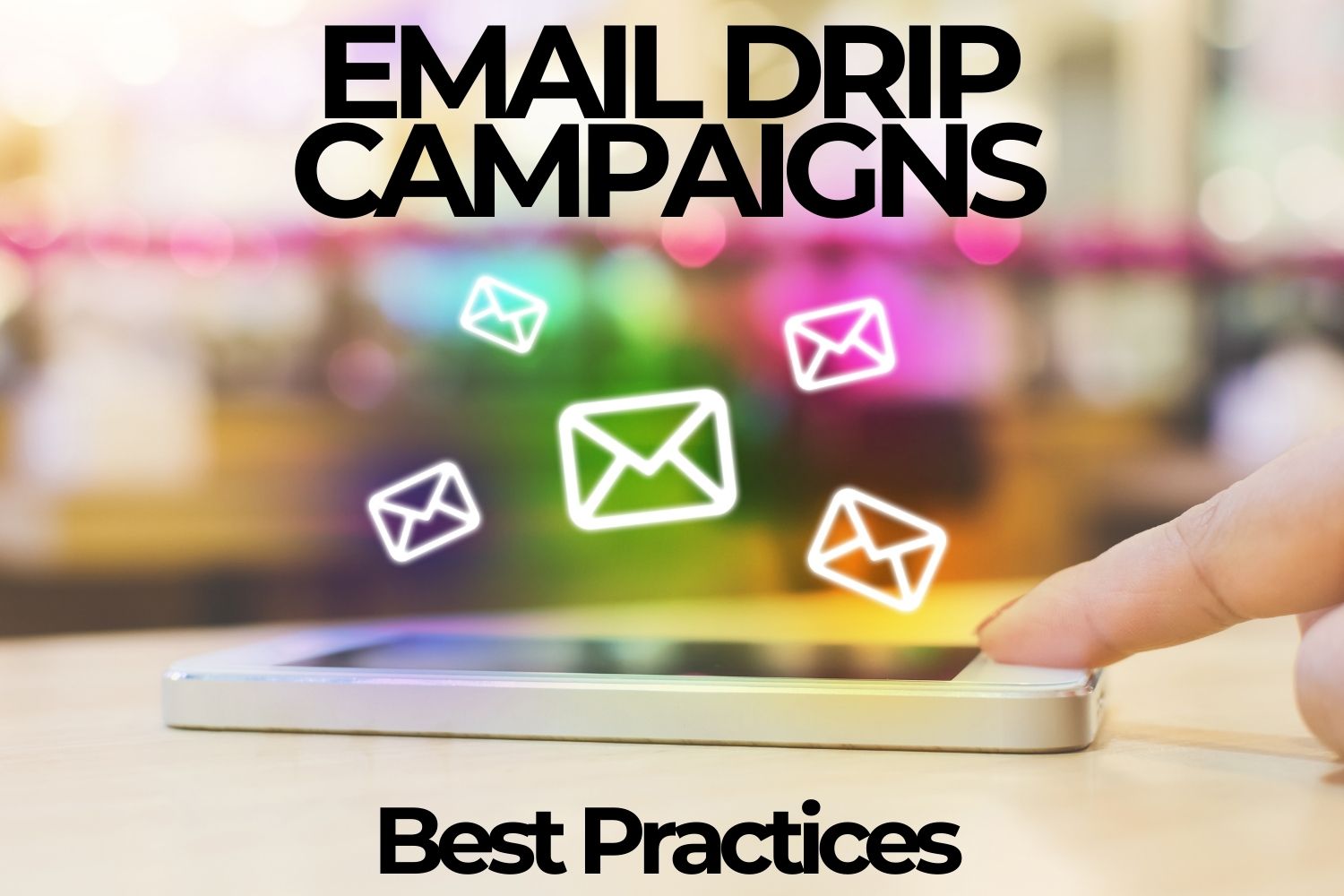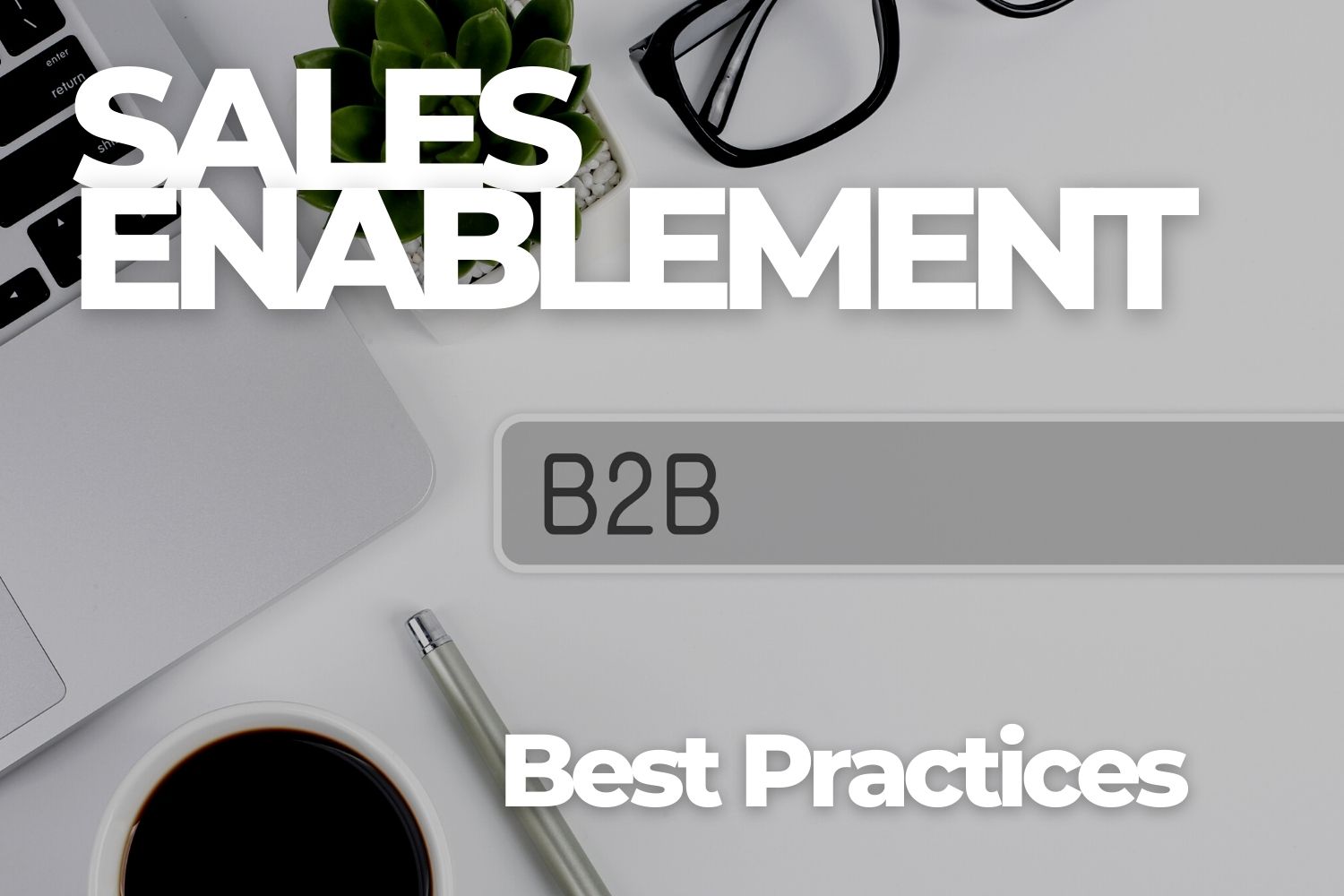It’s a jungle out there.
Online marketing has become a wild animal. But you don’t have to be a gorilla to dominate. Nor do you have to go ape and do absolutely everything. However, you do indeed need to understand what’s working for the leaders of the pack.
I thought I’d survey the landscape and give you my take on how the most cunning companies are killing it with online marketing tactics. So here you are: 100 ways companies are thriving on the wild, wild web.
Marketing strategy
You’ll get slayed if you don’t create a plan based on the needs of your prospects and customers.
“Successful business strategy doesn’t begin with a product; it begins with a customer—a living, breathing person with unique interests, quirks, pain points, and needs. Wise companies put their customers’ goals ahead of their own by creating products, services and content that specifically fulfill and appeal to their customers’ needs and desires.”
~ Angie Schottmuller, Forbes Top 10 Online Marketer
@aschottmuller
The better online marketers:
- Develop a unique value proposition: You have to start with the “why.” If you don’t know what this means, you’re not yet ready to market.
- Interview clients to create personas: Effective marketers are obsessed with understanding their customer’s pains, needs, and challenges.
- Understand the voice of the customer: Social media is the greatest marketing research tool ever. Listen and learn what troubles buyers.
- Conduct customer and reader surveys: You’ll get the answers you need by asking the right people the right questions.
- Address the customer journey: Marketers need to understand the various touch points prospects encounter and prepare assets to meet their specific needs in context.
- Read competitors blogs: Size-up the competitors you’re losing opportunities to. They may be good, but they’re not perfect.
- Read and comment on industry authority blogs: Someone in your market is taking the lead by leading the conversation. Join the conversation.
- Read and/or subscribe to industry research: Researchers are unraveling where your competitors’ strengths and weaknesses are.
Conversion-focused website
We’re at least ten years removed from the “brochure” website with a phone number and/or contact us form. If you recognize your website is the hub of your marketing (and you better), you must then carefully develop and execute a website designed to make it easy for visitors to find what they seek and inspire them to progress through your sales cycle.
“A bad website will hurt you even if you master everything else in marketing. Your site is your home. It’s your face. It’s the center of all of your marketing. The website determines the conversion rate. That’s the percentage of visitors who act, becoming subscribers and leads. All the traffic in the world won’t help if your website stinks.”
~ Andy Crestodina, Orbit Media Studios
@crestodina
The better online marketers:
- Make a clear homepage: Effective online marketers put great effort into creating a homepage that clearly communicates the company’s unique selling proposition.
- Have a call to action on every page: Each page must have a purpose and guide the visitor to take a specific action.
- Have a responsive website: To deliver a friendly user experience across devices, your website should respond to the given screen size.
- Make navigation simple: A well-structured site includes clear navigation to ensure a visitor is never lost or confused.
- Populate key pages with social proof: Put testimonials, ratings, certifications and accolades in the path of the reader to heighten credibility.
- Make a compelling about us page: Great websites inject personality into their about us pages to help readers understand who will serve them (and how).
- Offer thank you pages: Conversion actions should invoke thank you pages to (1) express appreciation and (2) suggest additional actions.
- Run on a CMS: A content management system (CMS) makes it easy and cost-effective to publish content without relying on coders.
- Publish content hubs: Get serious about being a go-to resource on a topic with multimedia content hubs and/or microsites.
- Include images on every page: Tell a story on each page and increase engagement with one or more photos, diagrams, screenshots, or infographics.
- Offer site search: Readers find onsite search functionality helpful. As the website owner, your search mechanism is likely to deliver useful insights into what content readers seek.
- Encourage dialogue: Invite visitors to engage and interact with blog comments, forums, surveys or chat.
Content marketing
Buyers go online looking for information, entertainment and inspiration and are attracted to the brands that provide it. This means the most important challenge for marketers now is creating content customers want to consume.
“Content builds relationships. Relationships are built on trust. Trust drives revenue.”
~ Andrew Davis, Founder of Monumental Shift
@TPLDrew
The better online marketers:
- Document content marketing plans: Marketers that create, document and update their content marketing plans consistently outperform the pack.
- Empower a leader: With or without the somewhat new title of chief content officer, someone in your company must own the content and lead the charge.
- Audit content: Take stock of the content on your website (and beyond) to evaluate what you have, how it performs and what needs to be created.
- Hire an editor: Great content marketers adapt the practices of effective publishers and understand it’s vital to work with a managing editor.
- Harvest content ideas from every department: Understanding the best content answers customers’ questions, the best content marketers source experts all across the company.
- Maintain consistency: You won’t succeed with content marketing if you think in terms of campaigns. Consistent publishing is a key to success.
- Collaborate effectively: It’s vital to collaborate efficiently. Doing so requires employing effective tools and processes.
- Publish customer success stories: People want to read about people who face similar challenges. Give your customers a starring role in your content.
- Publish user-generated content: A truly effective way to engage customers and humanize your brand is to invite your audience to the publishing party.
- Curate content from industry authorities: Like traditional media outlets, effective content marketers treat their audience to the best insights from the best in the business.
- Publish guest posts: Leading multi-author blogs feature contributions from all kinds of constituents.
- Collaborate with leaders in their industry: Blog posts, research reports, video, podcasts, eBooks—all types of content—create opportunities to co-create with experts.
- Use visual social media sites such as Pinterest, Instagram and Vine: Content marketers respond to their audience’s love of visual content via the hottest social media networks.
- Create eBooks: eBooks (usually offered to users willing to opt-in) afford content marketers the opportunity to go deep in addressing customer pain points.
- Offers subscription options for blog: You need to make it very easy for interested readers to subscribe to your blog or content hub (or they won’t be back).
- Update old content: Some information grows outdated fast. Recognize this and update (or remove) content to maintain credibility.
- Create seasonal content: Be it holidays, events or industry news, you’ll benefit from delivering topical and timely content.
- Offer tools: Great content marketers develop templates, cheat sheets, checklists, and various tools to give the audience the shortcuts they desire.
Multimedia
Some prospect and customers prefer to read. Others rather watch. Some listen. Of course, they all have various devices and lifestyles. You’re going to want be there for them with a versatile media mix.
“You can certainly create a killer blog or an amazing podcast as the cornerstone of your content. But it’s more efficient and effective in the long term (and necessary for larger organizations) to take a broader view – to create content that can come to life in various formats, across many different platforms, and that can address multiple audiences.”
~ Arnie & Brad Kuenn, from their book, Content Marketing Works
@ArnieK, @BKuenn
The better online marketers:
- Podcast: The growth of podcast listeners seems to be following the meteoric rise of mobile.
- Create video featuring management and employees: This effective tactic goes far to establish authority as well as create the human touch customers crave.
- Create video interviews: Interviews of customers, partners, and industry experts enable brands to emulate talk show TV.
- Track video metrics: Companies that take video seriously are getting powerful insights into buyer behavior and gaining serious advantages for managing leads.
- Create infographics: Marketers create the most valuable form of visual content and enjoy massive reach when their infographics make the rounds.
- Develop gamification programs: Gamification, quizzes and other forms of interactive content engages and motivates users and builds loyalty.
- Offer apps: Offer branded apps and your customers will hold you in their hands.
- Publish on SlideShare: SlideShare is the world’s largest professional content sharing community. It’s wise to have a presence on it.
Search engine optimization

As long as search engines remain the dominant starting destination for buyers and the largest traffic source, search engine optimization will remain a key priority in any digital marketing mix. While SEO continues to confound so many companies, it’s become a far simpler animal in recent years.
“It may be true that SEO has been around a long time, but it is still the most powerful earned, nonpaid source of traffic on the web. Searchers are seeking something very different from social media audiences or email audiences in that they are looking for exactly the thing they’ve told the search engine. And if the searcher arrives on your website, the power to solve that person’s problem, convert, and expose the searcher to your work is exceptional.”
~ Rand Fishkin, founder of Moz
@randfish
The better online marketers:
- Do keyword research: Keywords are the signposts you put up to get found. Your challenge is identify the phrases for which you stand a chance of ranking on the first page of search results.
- Optimize every page: Tedious? Yes. Complicated? No. Include keywords in your URL, title, headline (H1), body copy and as the “alt” tag of an image.
- Write meta descriptions: Describe the content of every page of your website and blog to help searchers understand why they should click through.
- Secure a Google My Business page: By using a Google My Business page and, if appropriate, local SEO, you can earn a valuable chunk of real estate on search results pages.
- Use internal links on every page: Help your readers and help search bots understand where to find relevant content with internal links.
- Put external links in blog posts: Outbound links help search engines better understand your blog and builds relationships with other bloggers.
- Set up conversion measures: Define conversion within Google Analytics and track your results to identify how you can improve your SEO and website.
Pay-per-click advertising (PPC)
Search marketing is a war zone. PPC programs such as Google AdWords buy you a ticket to the first page of search, which is the only page that matters.
“Paid ads put you in front of prospects wherever they are. Truly awesome PPC marketers match their ads to the specific intent of the consumer. They’re using logical segments and matching everything from the messaging to the time of day to the offer and more. PPC is going to act increasingly like email marketing, as marketers are able to get in front of consumers with a higher level of personalization, wherever they happen to be online.”
~ Larry Kim, Wordstream, Founder and CTO
@larrykim
The better online marketers:
- Run PPC ads: Ecommerce or not, your website is your online store. Lead people to it.
- Increase ROI in PPC: Pay-per-click is complex and competitive. Gain an advantage by getting PPC certified or having your ads managed by someone who is.
- Practice account based marketing for online ads: In B2B markets you must target the key accounts that generate the majority of your revenues.
- Experiment with mobile ads: Customers in new media are looking for products on their smart phones. Smart marketers are exploring mobile advertising programs.
- Retarget: Aggressive advertisers continue advertising to those that came and went with retargeting ad programs.
Email marketing
Savvy marketers know email is the best tool for moving customers forward in the buying process. If you allow your competition to own your customers’ inboxes, you lose.
“Email is one of the most important catalysts in your integrated marketing strategy. Email is effective at introducing information, influencing decisions and converting prospects to customers. It is one of the most critical ‘owned’ assets you have in your marketing arsenal. You can control who gets which message, at which time and frequency. You control the quality and quantity of your subscribers.”
~ Erik Harbison, CMO, AWeber
@ErikHarbison
The better online marketers:
- Capture email addresses with landing pages: The reason prospects trade their email addresses for content is they see value in it. Can you offer valuable advice?
- Use progressive profiling in some forms: Successful marketers recognize repeat visitors and aim to collect additional insights regarding their needs.
- Use an email opt-in pop-up form or landing page: A lot of companies feel pop-ups are rude or annoying. They happen to be the same companies whose email databases grow slowly.
- Send enewsletters: When prospects give you their email they’re giving you permission to market to them. Effective marketers act on it regularly.
- Offer autoresponders: Marketing automation 101 suggests you use its power to nurture leads with the pre-planned delivery of useful content.
- Send behavioral email: The actions prospects do and don’t take should inform the messages they are sent.
- Send transactional email: The better marketers thank their customers, offer additional value in follow-up email, and upsell.
- Test subject lines: Open and click-through rates are the measures of success in email. Simple A/B tests on subject lines increase effectiveness.
- Track email metrics regularly: Your email service provider collects the metrics you need. It’s on you to examine the numbers and improve your programs.
Social media marketing
Old school marketers continue to dismiss social media marketing. It makes no sense. Your customers are on social media looking to do business with people they trust.
“Want your brand to be more successful? Wrap social around every business practice and ditch the win-win mentality. Embracing learn-learn increases the value of relationships for all parties. This can put you in a much better position than your competitors for getting well-focused products to market much faster and earning a higher level of marketplace trust and identification with your brand.”
~ Ted Rubin, Author of How to Look People in the Eye Digitally
@TedRubin
The better online marketers:
- Engage in social media marketing: Some companies take social media seriously and some don’t. The best ones understand marketing is a conversation.
- Run targeted social media ads: You don’t have to put money in social media advertising, but if you do more people will discover you online.
- Tweet multiple times each day: Twitter is an outreach tool that great social media marketers take advantage of morning, noon and night.
- Use social media monitoring tools: It’s easy to put tools in place to monitor mentions of your company and its brands and it’s hard to understand why you wouldn’t.
- Capture social media analytics: Data-driven marketers have a significant advantage. Know what is and isn’t increasing engagement.
- Have a LinkedIn company page: Your business needs to optimize its presence on the world’s leading professional network.
- Have share buttons on the blog: You need your reader’s to expand your reach and help grow your audience. Make it easy for readers to share your stuff.
- Share content from their blog and site: Think of social media as free content distribution channels and use them every day.
- Build personal brands: Great marketing companies put their leaders in the middle of the conversation to build authority.
- Use video: The winners are using video because customers like it. It’s show time.
Marketing automation
A marketing automation platform (MAP) automates marketing processes such as customer segmentation, customer data integration and campaign management to make marketing processes infinitely more efficient and the programs more effective.
“Every business is on a journey to grow and increase revenue. In order to achieve these goals, you need to align your people, process and technology. With marketing automation, you’re able to nurture relationships with customers who are not ready to buy. You’re able retain and extend customer relationships. You align marketing with sales to track leads properly and focus on improving your marketing return on investment (ROI).”
~ Jon Miller, CEO of Engagio and co-founder of Marketo
@jonmiller
The better online marketers:
- Segment customers: Categorize customers and prospects by common demographics, behaviors and interests.
- Employ lead scoring systems: Marketing and sales work together to devise a scoring system to represent the propensity a lead will become a sale.
- Use dynamic content: Send targeted offers and content based on an individual’s specific user profile.
- Define useful metrics: Create a plan to track meaningful analytics (related to program objectives) and keep updated dashboards for quick reference.
- Integrate marketing channels: Deliver cross-platform user experiences to optimize conversion.
- Test their communications: Use marketing automation to test variables such as send times, subject lines, copy and design.
Webinars
Marketers consistently rate webinars as one of their most effective tactics. They deliver wide reach very cost-effectively and remain an asset afterwards.
“Webinars are the most immersive content experience available. No other tactic offers attendees the experience of interacting with the content so thoroughly for 30-60 minutes. In addition to a variety of interactivity options, attendees can ask the presenter questions live and participate in the conversation with peers – even more easily than in an in-person environment. The interactive nature of this content consumption makes it very memorable and impactful.”
~ Shelby Britton, Adobe, author of The Content Marketer’s Guide to Webinars
@shelbynbritton
The better online marketers:
- Conduct webinars to generate leads: Companies of all sizes are able to generate leads by hosting free webinars.
- Offer webinars for interested prospects: Besides being used to generate leads, webinars can be key to nurturing leads and converting prospects to customers.
- Help existing customers with webinars: Creating webinars explicitly for customers can help increase adaption, lower support costs, upsell, increase satisfaction and foster loyalty.
- Offer webinar speakers: A smart play is to offer yourself or specialists in your company as guest speakers for the webinars industry partners host.
Influencer marketing
Influencer marketing has many colors. Companies and individuals may focus on targeting those that have substantial clout, and thus, sway over an audience. They may publish and share the works of influencers to gain influence by association.
Often, influencer marketing involves co-creation, that is, collaborating on content. Podcast interviews are an ideal example. Finally, brands are increasingly offering incentives including free products, services and paychecks to have bloggers and established voices in social media endorse or review their products.
“In his famous book ‘The Tipping Point,’ Malcolm Gladwell calls out mavens (as he calls influencers) as people who also have a lot of knowledge about a topic. Influence isn’t just having a lot of followers. It’s also driven by expertise and credibility on subject matter and the relationship between the influencer and his or her followers.”
~ Kyle Wong, Forbes writer
@kwong47
The better online marketers:
- Explore influencer marketing programs: There is no more powerful force in marketing than word-of-mouth. Influencer marketing ignites it.
- Publish guest blogs at influential websites: Besides reaching out to bloggers to cover your product, a very meaningful tactic is to offer a respected publisher a great piece of content in line with their audience’s interests.
- Develop customer advocacy programs: A happy and enthusiastic customer is your best salesperson. Customer advocates are authentic and engaging, and therefore, incomparably influential.
Training
It’s sunk in: the demand for integrated marketing skills now far exceeds the supply. Old school marketers simply aren’t adequately equipped to succeed in the new inbound world. Your team needs be trained by experts.
“The businesses that will win in this increasingly customer-centric era, will evolve their marketing strategies to new processes that include a digital heavy, multi-channel, multi-format and multi-dimensional strategy. But the environment is changing much faster than new talent can arrive. The only thing that enables the evolution in the businesses that win, is a constant focus on adaptation and scale of the skills of their team. Put simply: great marketing today takes a village – but these days the villagers need new skills to adapt and thrive in the world in which they live.”
~ Robert Rose, Content Marketing Institute, Chief Strategy Officer
@Robert_Rose
The better online marketers:
- Train employees on social media marketing: Heard of employee advocacy? The better marketers use programs to train employees on social media.
- Create marketing-aware culture throughout company: High performers task the entire company to contribute content. They kick off their programs with content marketing workshops.
Branding
Every interaction someone has with your company is an opportunity to reinforce (or degrade) the value of your brand. Obviously, with the proliferation of media and your company’s marketing programs, the task becomes increasingly challenging.
“No customer or prospect will see everything you create, but they are likely to see at least a few things, in a few places. You have to look, feel, and sound like the same company everywhere. Inconsistency breeds dissonance and dissonance evaporates trust.”
~ Jay Baer, Convince and Convert, author of “Youtility”
@jaybaer
The better online marketers:
- Expand their digital footprint: While a responsible brand refrains from diving blind into every media that emerges, most will look for opportunities to extend their reach with new and relevant channels.
- Maintain brand consistency: More touch points, more challenges. Great brands don’t lose sight of this and create programs to ensure brand consistency.
- Have a brand personality: Smart marketers understand the role of brand personality and strive to increase brand equity and foster relationships by staying true to a set of traits.
- Quality check everything: Smart brands exercise relentless quality control on every web page, tweet, and all points between.
- Create and kill programs every year: Not every effort pays off. While many brands are more experimental than ever, responsible marketers review their efforts often and deep-six the losers.
- Have a strong point of view: Memorable brands seldom aim down the middle of the road or strive to please everyone. Instead, they express a point of view thereby rallying people around their cause.
- Entertain: I often say, “You either get remembered or forgotten.” Creating fun and entertaining marketing makes all the difference.
- Have purpose: Your marketing should align with your company’s mission. Always.
Share this post now. Just click to tweet…
Thank you very much for your contributions:
@aschottmuller, @crestodina, @TPLDrew, @ArnieK, @BKuenn, @RandFish, @LarryKim, @ErikHarbison, @TedRubin, @JonMiller, @ShelbyNBritton, @KWong47, @Robert_Rose, @jaybaer





















Comments
Hexagon Graphics
Thank you for this Barry. i have bookmarked this article for future reference. I am tempted to use this as a checklist for all marketing campaigns. I especially like the idea of expanding the brand footprint online.